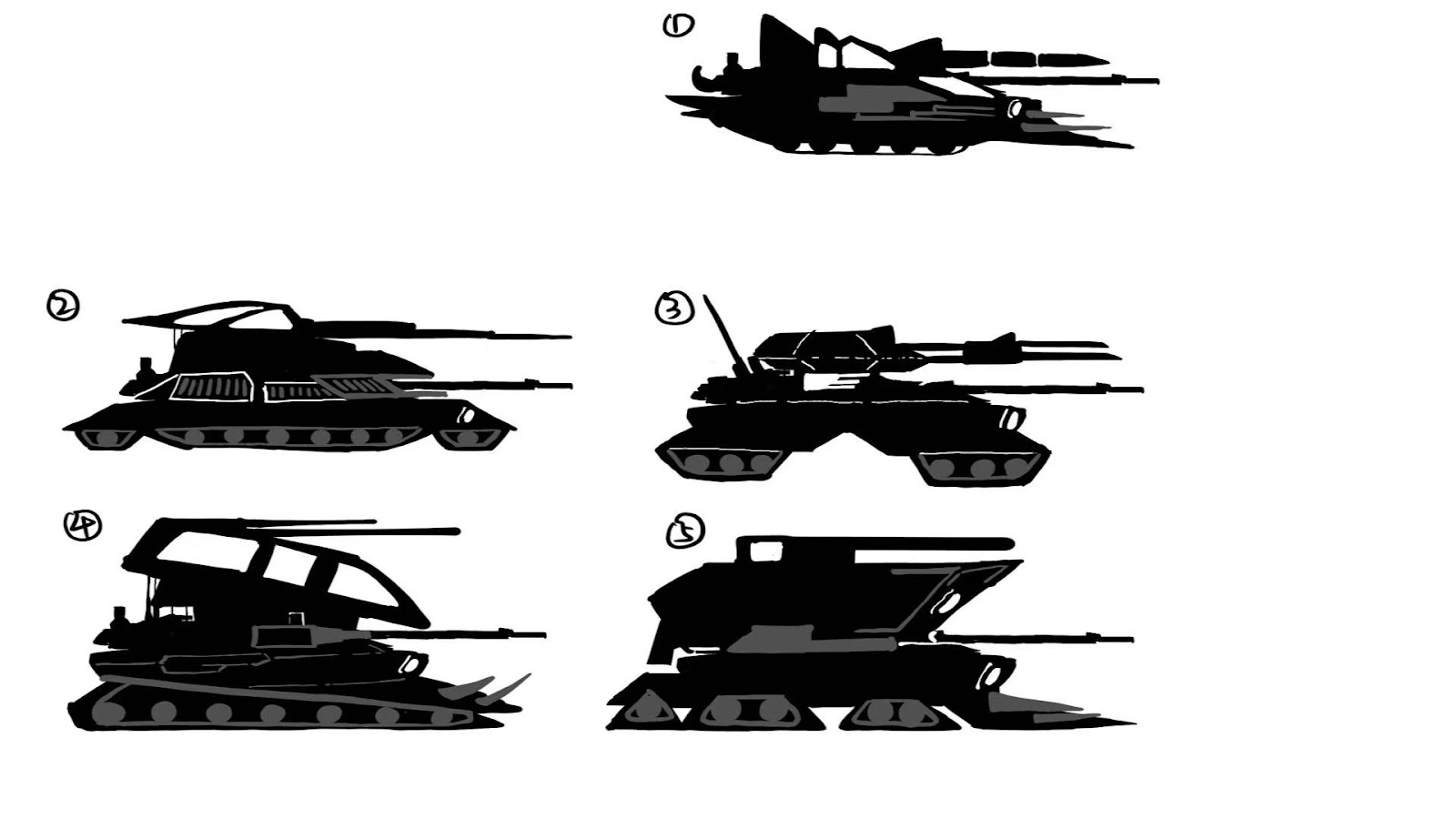Vehicle and Props Design GCD61804/Exercise
Vehicle and Props Design
GCD61804/Exercise
LIU CHENG RUI (0370930)
GCD61804/Vehicle and Props Design/ Bachelor of Design (Hons) in Creative Media / Taylor's University
INSTRUCTION
EXERCISES
week2 Deconstruct and Reconstruct
In this exercise, we need to select three types (air, land and water) of a
theme for drawing, and test and practice the basic knowledge of 3D drawing
through simple combinations of shapes, decomposition and perspective. I
choose to practice from three aspects.
First, among the land vehicles, I chose the tank. I originally operated it
on the computer using the drawing board, but I didn't think the drawing was
very good. So I completed the remaining deconstruction work by drawing with
a pencil.
Fig2.1 Land vehicles (Deconstruction of tanks)
Fig2.2 Flying vehicles (Deconstruction of the Space Shuttle)
For underwater vehicles, I chose the hovercraft, which is mainly composed
of cuboids and cylinders.This time, I choose to deconstruct the hovercraft
from different perspectives.
This week, Mr. Kannan guided us on how to extract the contours and shapes
of existing vehicles and make modifications on this basis to create
brand-new contour designs.
I chose land vehicles, which are divided into three types: tanks,
four-wheelers and trucks.
Fig3.2 Silhouette of a four-wheeled vehicle
Fig3.3 Silhouette of the truck
week7 Perspective & Line Weights
Continuing the deconstruction and reconstruction exercises, Mr.
Kannan guided us to choose a type and apply the color. I chose the
SUV because, in my project 1, I was drawing a land vehicle.I drew
another five perspectives to explore different angles and
perspectives.
Fig7.1 5 Perspectives
I chose the second perspective for further development. I redrew
the perspective with different line thicknesses to enhance the
depth and clarity of the drawing.
Fig7.2 Line Weight
week8 Applying Colors
After adjusting the thickness of the vehicle's lines, I
attempted to apply some colors. I first searched for some
existing colors online for a try, and then added some other
color combinations according to my own preferences.
FEEDBACK
week3
It is sufficient to draw the perspectives of the three types of
vehicles on land, sea and air like this. Now you can focus more on
your project 1.
week4
Mr. Kannan thought the third silhouette of my truck was very
interesting and could continue. The first, third and fourth
ones had some problems in terms of shape. For example, the
lower part of Truck No. 3 was too wide and might not be able
to bear as much weight as a truck.
week8
The perspective structure of the vehicle is okay. If you have
time, you can try more types of vehicles for practice.
REFLECTION
Experience
This exercise started from three means of transportation: land,
sea and air. I chose tanks, space shuttles and hovercraft for form
decomposition and structural analysis. In practice, I tried
drawing with a digital tablet, but found that for beginners in
structure, hand-drawing with a pencil was more conducive to
observation and thinking. Subsequently, I learned how to redesign
by extracting the outline and carried out the complete process of
five views, line processing and color application around the SUV.
The entire process helped me systematically understand the basic
construction methods of 3D modeling and also enhanced my
expression ability in actual design.
Observation
During the repeated process of drawing and analyzing, I
realized that even for transportation vehicles composed of
simple geometric shapes, there are complex functional logics and
design considerations hidden behind their structures. For
example, the low center of gravity and heavy armor of the tank
reflect its combat stability. Furthermore, I have observed that
the perspective changes of objects not only affect the accuracy
of the form, but also directly determine the spatial sense and
realism of the picture. The thickness of lines plays a role in
guiding the line of sight in composition, and the subtle changes
in the overlapping and projection relationships of shapes from
different angles are the key to improving the quality of the
drawing.
Findings
Through this exercise, I have deeply realized that styling
design is not only the accumulation of techniques, but also the
combination of observation, understanding and creativity. The
process of disassembling complex structures has exercised my
spatial imagination ability and also made me think more
patiently about the composition of objects. The practice of
silhouettes and perspective has taught me to maintain logic in
creative expression, while the use of lines and colors has
enabled me to understand the power of visual language.














Comments
Post a Comment